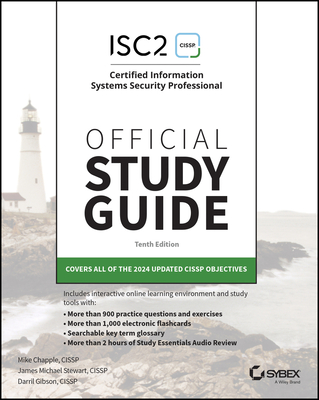CompTIA Network+ Certification Training in Richmond
|
We offer private customized training for groups of 3 or more attendees.
|
||
Course Description |
||
| The CompTIA Network+ Certification course builds on your existing
user-level knowledge and experience with personal computer operating
systems and networks to present fundamental skills and concepts that you
will use on the job in any type of networking career. If you are
pursuing a CompTIA technical certification path, the CompTIA A+
certification is an excellent first step to take before preparing for
the CompTIA Network+ certification.
Course Length: 5 Days
Course Tuition: $2250 (US) |
||
Prerequisites |
|
| An introductory course in a Windows operating system, or equivalent skills and knowledge, is required. Students can take any one of the following courses:... Windows 98: Introduction ... Windows Millennium Edition: Introduction ... Windows 2000: Introduction ... Windows XP: Introduction ... CompTIA A+ certification, or the equivalent skills and knowledge, is helpful but not required. Students may wish to take the following courses: A+ Certification. | |
Course Outline |
|
Lesson 1: Network Theory Lesson 1: Network Theory Topic 1A: Networking Terminology Topic 1B: Network Building Blocks Topic 1C: Standard Network Models Topic 1D: Network Topologies Topic 1E: Network Categories Lesson 2: Network Communications Methods Topic 2A: Transmission Methods Topic 2B: Media Access Methods Topic 2C: Signaling Methods Lesson 3: Network Data Delivery Topic 3A: Data Addressing and Delivery Topic 3B: Network Connection Mechanisms Topic 3C: Reliable Delivery Techniques Lesson 4: Network Media and Hardware Topic 4A: Bounded Network Media Topic 4B: Unbounded Network Media Topic 4C: Noise Control Topic 4D: Network Connectivity Devices Lesson 5: Network Implementations Topic 5A: The OSI Model Topic 5B: Client Network Resource Access Topic 5C: Ethernet Networks Topic 5D: Token Ring Networks Topic 5E: Fiber Distributed Data Interface (FDDI) Networks Topic 5F: Wireless Technologies and Standards Lesson 6: Networking with TCP/IP Topic 6A: Families of Protocols Topic 6B: The TCP/IP Protocol Topic 6C: Default IP Addresses Topic 6D: Custom IP Addresses Topic 6E: The TCP/IP Protocol Suite Lesson 7: TCP/IP Services Topic 7A: IP Address Assignment Methods Topic 7B: Host Name Resolution Topic 7C: NetBIOS Name Resolution Topic 7D: TCP/IP Utilities Topic 7E: TCP/IP Upper-Layer Services Topic 7F: TCP/IP Interoperability Services Lesson 8: Other Network Protocols Topic 8A: The NetBEUI Protocol Topic 8B: The IPX/SPX Protocol Topic 8C: The AppleTalk Protocol Topic 8D: The IP Version 6 (IPv6) Protocol Lesson 9: Local Area Network (LAN) Infrastructure Topic 9A: Bridges and Switches Topic 9B: IP Routing Topology Topic 9C: Static IP Routing Topic 9D: Dynamic IP Routing Topic 9E: Controlling Data Movement with Filters and VLANs Lesson 10: Wide Area Network (WAN) Infrastructure Topic 10A: WAN Switching Technologies Topic 10B: WAN Transmission Technologies Topic 10C: WAN Connectivity Methods Topic 10D: Voice over Data Systems Lesson 11: Network Security Topic 11A: Network Threats Topic 11B: Virus Protection Topic 11C: Local Security Topic 11D: Network Authentication Methods Topic 11E: Data Encryption Topic 11F: Internet Security Lesson 12: Remote Networking Topic 12A: Remote Network Architectures Topic 12B: Terminal Services Implementations Topic 12C: Remote Access Networking Implementations Topic 12D: Virtual Private Networking Lesson 13: Disaster Recovery Topic 13A: Planning for Disaster Recovery Topic 13B: Data Backup Topic 13C: Fault Tolerance Methods Lesson 14: Network Data Storage Topic 14A: Enterprise Data Storage Techniques Topic 14B: Clustering Topic 14C: Network-Attached Storage (NAS) Topic 14D: Storage Area Network (SAN) Implementations Lesson 15: Network Operating Systems Topic 15A: Microsoft Operating Systems Topic 15B: Novell NetWare Topic 15C: UNIX and Linux Operating Systems Topic 15D: Macintosh Networking Lesson 16: Network Troubleshooting Topic 16A: Troubleshooting Models Topic 16B: TCP/IP Troubleshooting Utilities Topic 16C: Hardware Troubleshooting Tools Topic 16D: System Monitoring Tools Topic 16E: Network Baselining - See more at: http://www.techsherpas.com/courses/network-certification/network-certification#sthash.vxmwOuiz.dpufLesson 1: Network Theory Topic 1A: Networking Terminology Topic 1B: Network Building Blocks Topic 1C: Standard Network Models Topic 1D: Network Topologies Topic 1E: Network Categories Lesson 2: Network Communications Methods Topic 2A: Transmission Methods Topic 2B: Media Access Methods Topic 2C: Signaling Methods Lesson 3: Network Data Delivery Topic 3A: Data Addressing and Delivery Topic 3B: Network Connection Mechanisms Topic 3C: Reliable Delivery Techniques Lesson 4: Network Media and Hardware Topic 4A: Bounded Network Media Topic 4B: Unbounded Network Media Topic 4C: Noise Control Topic 4D: Network Connectivity Devices Lesson 5: Network Implementations Topic 5A: The OSI Model Topic 5B: Client Network Resource Access Topic 5C: Ethernet Networks Topic 5D: Token Ring Networks Topic 5E: Fiber Distributed Data Interface (FDDI) Networks Topic 5F: Wireless Technologies and Standards Lesson 6: Networking with TCP/IP Topic 6A: Families of Protocols Topic 6B: The TCP/IP Protocol Topic 6C: Default IP Addresses Topic 6D: Custom IP Addresses Topic 6E: The TCP/IP Protocol Suite Lesson 7: TCP/IP Services Topic 7A: IP Address Assignment Methods Topic 7B: Host Name Resolution Topic 7C: NetBIOS Name Resolution Topic 7D: TCP/IP Utilities Topic 7E: TCP/IP Upper-Layer Services Topic 7F: TCP/IP Interoperability Services Lesson 8: Other Network Protocols Topic 8A: The NetBEUI Protocol Topic 8B: The IPX/SPX Protocol Topic 8C: The AppleTalk Protocol Topic 8D: The IP Version 6 (IPv6) Protocol Lesson 9: Local Area Network (LAN) Infrastructure Topic 9A: Bridges and Switches Topic 9B: IP Routing Topology Topic 9C: Static IP Routing Topic 9D: Dynamic IP Routing Topic 9E: Controlling Data Movement with Filters and VLANs Lesson 10: Wide Area Network (WAN) Infrastructure Topic 10A: WAN Switching Technologies Topic 10B: WAN Transmission Technologies Topic 10C: WAN Connectivity Methods Topic 10D: Voice over Data Systems Lesson 11: Network Security Topic 11A: Network Threats Topic 11B: Virus Protection Topic 11C: Local Security Topic 11D: Network Authentication Methods Topic 11E: Data Encryption Topic 11F: Internet Security Lesson 12: Remote Networking Topic 12A: Remote Network Architectures Topic 12B: Terminal Services Implementations Topic 12C: Remote Access Networking Implementations Topic 12D: Virtual Private Networking Lesson 13: Disaster Recovery Topic 13A: Planning for Disaster Recovery Topic 13B: Data Backup Topic 13C: Fault Tolerance Methods Lesson 14: Network Data Storage Topic 14A: Enterprise Data Storage Techniques Topic 14B: Clustering Topic 14C: Network-Attached Storage (NAS) Topic 14D: Storage Area Network (SAN) Implementations Lesson 15: Network Operating Systems Topic 15A: Microsoft Operating Systems Topic 15B: Novell NetWare Topic 15C: UNIX and Linux Operating Systems Topic 15D: Macintosh Networking Lesson 16: Network Troubleshooting Topic 16A: Troubleshooting Models Topic 16B: TCP/IP Troubleshooting Utilities Topic 16C: Hardware Troubleshooting Tools Topic 16D: System Monitoring Tools Topic 16E: Network Baselining - See more at: http://www.techsherpas.com/courses/network-certification/network-certification#sthash.vxmwOuiz.dpuf |
Course Directory [training on all levels]
- .NET Classes
- Agile/Scrum Classes
- AI Classes
- Ajax Classes
- Android and iPhone Programming Classes
- Azure Classes
- Blaze Advisor Classes
- C Programming Classes
- C# Programming Classes
- C++ Programming Classes
- Cisco Classes
- Cloud Classes
- CompTIA Classes
- Crystal Reports Classes
- Data Classes
- Design Patterns Classes
- DevOps Classes
- Foundations of Web Design & Web Authoring Classes
- Git, Jira, Wicket, Gradle, Tableau Classes
- IBM Classes
- Java Programming Classes
- JBoss Administration Classes
- JUnit, TDD, CPTC, Web Penetration Classes
- Linux Unix Classes
- Machine Learning Classes
- Microsoft Classes
- Microsoft Development Classes
- Microsoft SQL Server Classes
- Microsoft Team Foundation Server Classes
- Microsoft Windows Server Classes
- Oracle, MySQL, Cassandra, Hadoop Database Classes
- Perl Programming Classes
- Python Programming Classes
- Ruby Programming Classes
- SAS Classes
- Security Classes
- SharePoint Classes
- SOA Classes
- Tcl, Awk, Bash, Shell Classes
- UML Classes
- VMWare Classes
- Web Development Classes
- Web Services Classes
- Weblogic Administration Classes
- XML Classes






